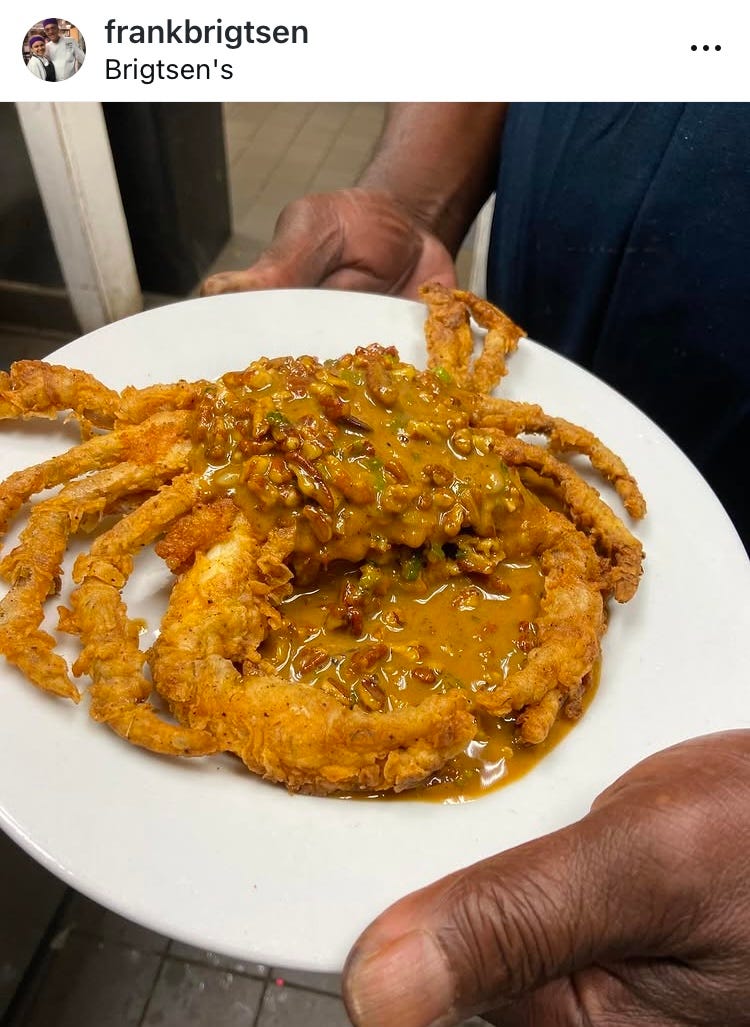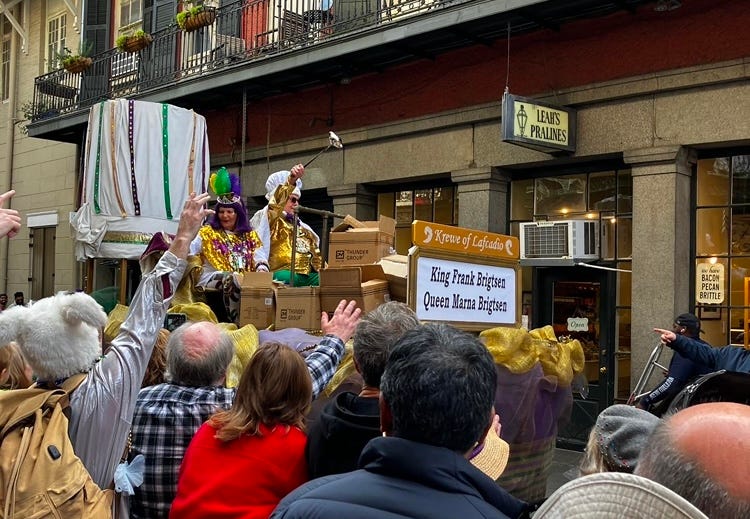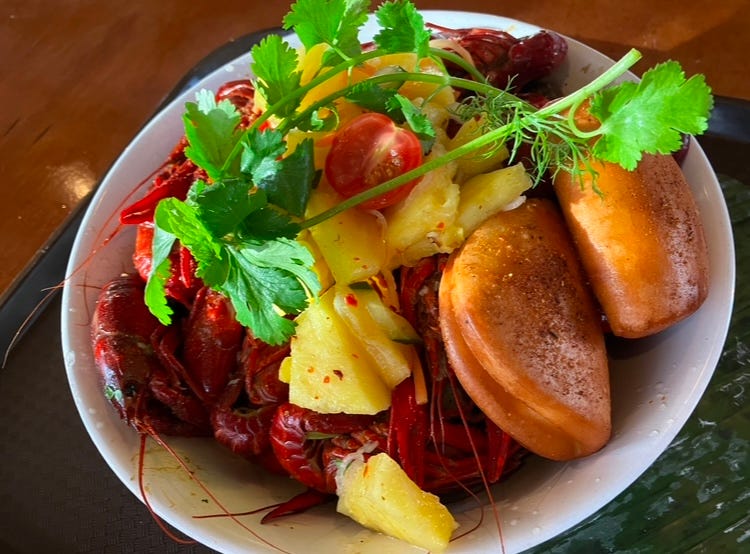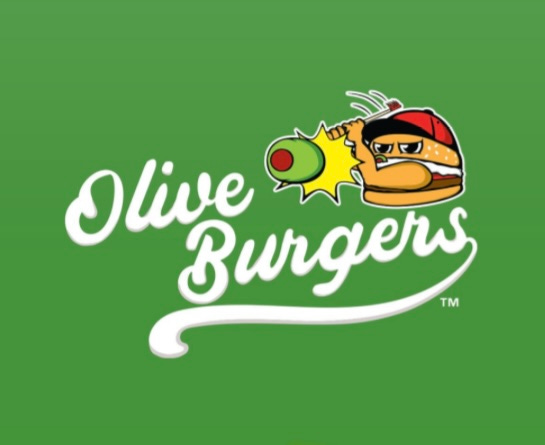Gelato, Glasses, And Vinyl: The Small Businesses That Pope Francis Helped
The late pope was an ideal and generous customer
Hello, and welcome to the CulinaryWoman Newsletter! I’m happy to see my returning subscribers and also to say hi to people who are following CulinaryWoman on the Substack app.
I hope you’ll step up and subscribe, whether for free or paid. You can also Buy Me A Coffee in any amount if you’d like to show some support for my work. I don’t accept ads or have sponsors, so subscriptions and BMAC are how I keep going.
This week, I’ve been following the news from Rome closely. The death of Pope Francis is a historic moment for the Roman Catholic Church, in which I was raised. The outpouring of love and respect for him has been heartwarming.
Generous With The Hungry, And A Welcome Customer
The public radio program Hidden Brain is one of my favorite shows. It focuses on human behavior and the many things that influence us without our knowing it. There’s always something intriguing in each program.
The most recent episode, also available as a podcast, looked at “weak ties,.” These are described as tiny interactions that can make people feel better. Think of the small talk you make with your favorite server or restaurant owner. Or, the chats you regularly have with your postal carrier and hair stylist.
Pope Francis was a master of weak ties. Since his death on Monday, there has been a flood of stories across social media, on television and on radio about peoples’ encounters with the pontiff. I never got to meet him, so I envy those who did.
Pope Francis didn’t just bless the faithful or be kind to his staff, however. He was a friend to people in the food world.
Of course, he met famous chefs, such as Nobu Matsuhisa, who you can see above. But he was also instrumental in supporting the gelato makers of Rome.
A Man After My Heart
Pope Francis had a famous sweet tooth, and as many Romans do, he like to scoot out for a cone or a dish of gelato. His favorite gelato shop was owned by Sebastian Padron, a fellow Argentinian whose shop was around the corner from the Santa Marta Residence, where Pope Francis lived
According to the Guardian, Sebastian’s wife, Silvia came up with an idea to promote the shop. “She told me: ‘Go and bring an ice-cream to Pope Francis,’” he recalled. “I said: ‘Impossible.’”
Undaunted, Silvia walked over to the residence and asked a Swiss Guard if she could bring the pope some gelato. The guard said sure, and she delivered a gallon of gelato for Pope Francis. Soon, gelato orders came flowing in, not just for the pope himself, but for Vatican events. The Padrons learned that his favorite flavors were dulce de leche, which is a milk-based caramel loved in Argentina, mango and lemon.
In 2020, in the midst of the pandemic, Silvia decided to cheer up the pope with an empanada. She enclosed a message saying, “It’s time we met,” and that resulted in an invitation to Santa Marta for the Padron family.
Pope Francis’ love of gelato extended beyond the Vatican. In 2018, the pope decided to distribute gelato to the poor of Rome to celebrate St. George’s feast day (his real name was Jorge, which translates to George in English.)
Nearly 3,000 servings of gelato were dished up in the city’s soup kitchens. And he shared other sweets, too. In 2019, Pope Francis gave a 44-pound chocolate Easter egg to the poor who came to the Caritas soup kitchen in central Rome.
Pope Francis also invited those in need to visit the Vatican Museums, gave them a gala dinner near Piazza Bernini, and even established a special day for them, the World Day of the Poor.
Along with those actions, Pope Francis patronized a local optician, a vinyl record store, and the tailor who specialized in clerical garments. He also favored plain black comfortable shoes, which he brought from Argentina, over the ceremonial red pumps that generations of popes traditionally wore.
His favorite dishes
Before his elevation to pope, the former Archbishop Bergoglio was a familiar figure in Buenos Aires. He could be seen riding the subway and often visited neighborhoods around town. His culinary favorites became well known to the city’s food community.
According to About Eating, Pope Francis liked pizza as well as an Italian dip known as bagna cauda. Its ingredients are garlic and anchovies slow cooked in olive oil, with a pat or two of butter stirred in. The spread is often served with crusty bread and crudites.
The pope also enjoyed yerba mate, a caffeine-laden herb tea which he drank in the morning. Another favorite was a lesser-known Argentinian pastry called “lies,” which are strips of fried dough (About Eating has a recipe for them). These are eaten during Carnival, or what we known as Mardi Gras season.
For dessert beyond gelato, Pope Francis liked chocolate cake as well as alfajores, which are cookies filled with dulce de leche. When I visited Argentina, we bought individually wrapped alfajores, and we also enjoyed chocolate gelato topped with dulce de leche.
Here’s your excuse to honor the pope: dig into a dish of your favorite gelato. If you have some dulce de leche, throw that on, too.
Farewell, Pope Francis. The world - and its gelato makers - will miss you.
From New Orleans, Delightful and Disappointing Restaurant News
When I made my first trip to New Orleans after Katrina, I wanted to eat at Brigtsen’s. I’d heard it was a welcoming, homey restaurant where the service was personal and the food was top notch. I still dream about his soft shell crab, which you can see above, and his gumbo.
As years went on, I got to know chef Frank Brigtsen and his wife Marna, who managed the front of the house with help from her sisters. I found out that Frank collected Mardi Gras doubloons, so I’d drop some in his mailbox from the parades in which I rode.
Two years ago, Frank and Marna reigned as king and queen of the Krewe of Lefcadio, which honors the culinary industry in the Crescent City. I joined a throng outside Antoine’s to cheer them on.
Frank is coming up to his 40th anniversary owning Brigtsen’s and that is the occasion for a profile in the Bitter Southerner. It’s beautiful writing, and explores his life in a way few articles do. Set aside the time to read it.
While that is a great read, there was some not-great restaurant news from New Orleans last week. Michael Gulotta is closing his two restaurants, Mopho and Maypop, on May 4. The news was a jolt to those of us who enjoyed his innovative, Asian-inspired cooking, which is unlike anything else in the city.
For instance, Mopho served a Bangkok Boil, an Asian riff on a crawfish boil that included bao buns and pineapple (yes, it worked great). Maypop had wonderful pastas that incorporated all kinds of ingredients beyond red sauce and veal.
I met Michael more than a decade ago when he worked at August, one of the city’s prettiest fine dining restaurants. We reconnected on my trips south and he has been a valuable tutor for me on the inner workings of restaurants.
Michael’s reasons for closing sound familiar: customers just haven’t been coming out in the numbers they once did, and a building collapse across the street from Maypop meant diners simply couldn’t get there.
Luckily for the area, Michael’s restaurant in suburban Metairie is flourishing. Tana offers a more-upscale menu, and everyone I know who’s eaten there raves about the food. Who knows, maybe some of the Mopho and Maypop dishes will show up there.
Tariffs Are Complicating Things In An Unexpected Way
I’ve written recently about the impact that increased tariffs are having on supermarkets, gourmet groceries and mail order food businesses. But there’s yet another issue that’s come up for restaurants.
The cost of new restaurant equipment is soaring, according to Modern Restaurant Management. While U S. manufacturers produce about $6.4 billion worth of commercial restaurant equipment annually, it’s a massive business for manufacturers in China.
Last year, Chinese companies exported $55 billion in restaurant equipment, roughly eight times more than is made here. Those goods now face a tariff of 145%.
The magazine predicts that tariffs will raise the start up costs for new restaurants. They most likely will pay more for American goods, which are likely to be in greater demand, and if they still choose to get equipment from China, they will pay more for that, as well.
Modern Restaurant Management says the higher costs also can interfere with the rehabbing of existing restaurants, and maybe cause them to be delayed for years.
A Baseball Tribute To A Michigan Favorite
If you grow up in Michigan, sooner or later you eat at a restaurant whose menu includes an olive burger.
They’re especially popular in the middle of the state, at places like the Halo restaurant chain in Flint, and Kewpee Burgers in Lansing, which claims to have introduced them in 1923. (I have eaten at both, and wouldn’t pick a favorite.)
Now, the minor league Lansing Lugnuts are tipping their cap to the olive burger. For two games this season, they will take the field as the Cap City Olive Burgers (Lansing is Michigan’s state capitol).
The Lugnuts are an affiliate of the Athletics, and play in the High-A Midwest League. The logo they’ll use for those games is a burger swinging a frilled toothpick like a baseball bat, with a green olive representing a baseball.
Keeping Up With CulinaryWoman
I am always happy to hear from CW readers. You can reach me via the Substack app, by replying to the newsletter, or in one of these ways.
Website: www.michelinemaynard.com
Email: culinarywoman (@) gmail dot com
Threads and Instagram: (@) michelinemaynard
Bluesky: mickimaynard.bsky.social
TikTok: CulinaryWoman
Tomorrow, I’ll be back with Red Beans & Advice for our paid subscribers. I’ll look at a fast-moving trend: dessert flavors for breakfast. (If you are a subscriber to
you know she’s on it.) Enjoy these spring days, and see you next week.









Love this! Reminds me of the “Italian Job” gelato recipe sprinkled with olive oil and fennel pollen I adapted from NYC restaurant Lilia for easy home cooking! Just one scoop can waylay a Mafia Mobster's most nefarious plottings.
check it out:
https://thesecretingredient.substack.com/p/get-nyc-restaurant-lilia-italian-job-gelato-recipe